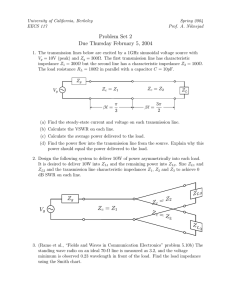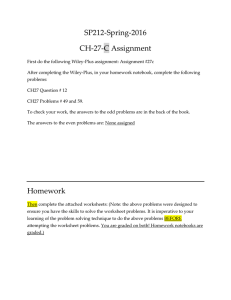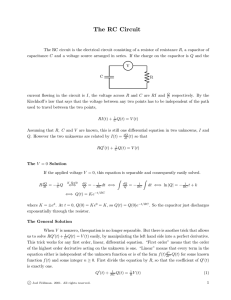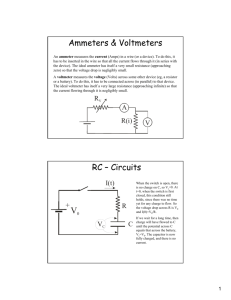PH 325 Impedance of C and L March 8, 2004
advertisement
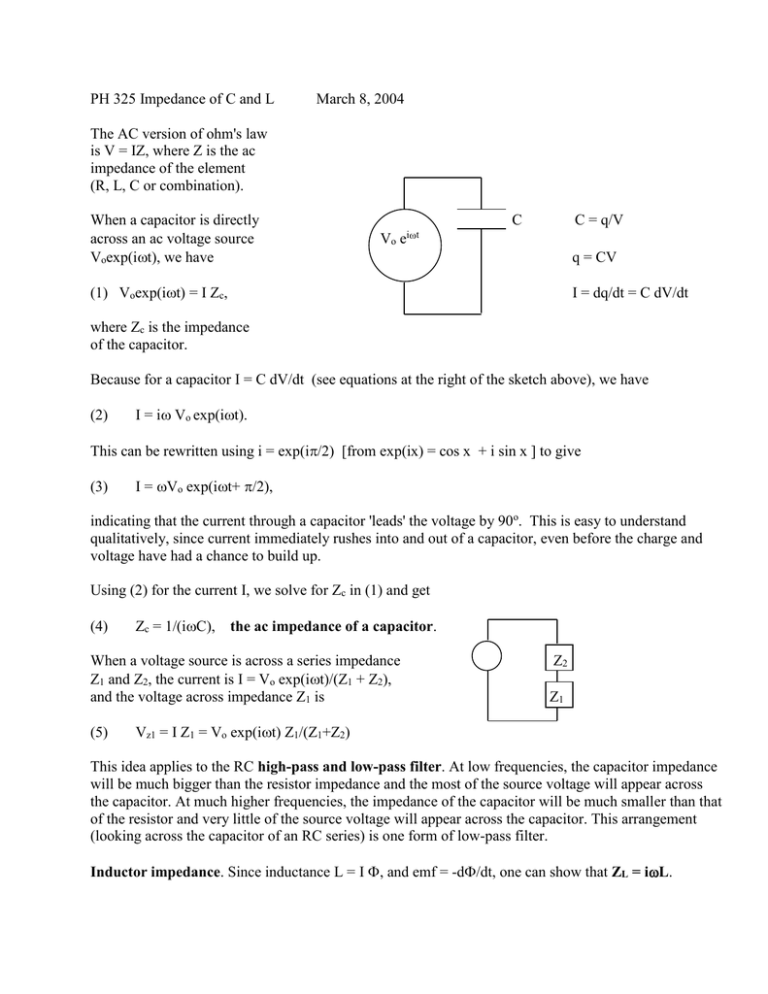
PH 325 Impedance of C and L March 8, 2004 The AC version of ohm's law is V = IZ, where Z is the ac impedance of the element (R, L, C or combination). When a capacitor is directly across an ac voltage source Voexp(it), we have C C = q/V i t Vo e q = CV (1) Voexp(it) = I Zc, I = dq/dt = C dV/dt where Zc is the impedance of the capacitor. Because for a capacitor I = C dV/dt (see equations at the right of the sketch above), we have (2) I = i Vo exp(it). This can be rewritten using i = exp(i/2) [from exp(ix) = cos x + i sin x ] to give (3) I = Vo exp(it+ /2), indicating that the current through a capacitor 'leads' the voltage by 90o. This is easy to understand qualitatively, since current immediately rushes into and out of a capacitor, even before the charge and voltage have had a chance to build up. Using (2) for the current I, we solve for Zc in (1) and get (4) Zc = 1/(iC), the ac impedance of a capacitor. When a voltage source is across a series impedance Z1 and Z2, the current is I = Vo exp(it)/(Z1 + Z2), and the voltage across impedance Z1 is (5) Z2 Z1 Vz1 = I Z1 = Vo exp(it) Z1/(Z1+Z2) This idea applies to the RC high-pass and low-pass filter. At low frequencies, the capacitor impedance will be much bigger than the resistor impedance and the most of the source voltage will appear across the capacitor. At much higher frequencies, the impedance of the capacitor will be much smaller than that of the resistor and very little of the source voltage will appear across the capacitor. This arrangement (looking across the capacitor of an RC series) is one form of low-pass filter. Inductor impedance. Since inductance L = I , and emf = -d/dt, one can show that ZL = iL.

